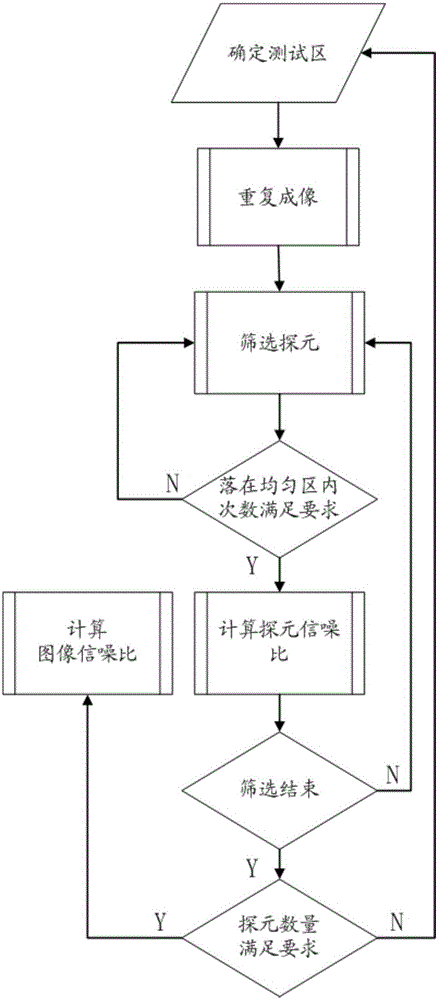Staring-imaging-based in-orbit signal-to-noise ratio test method of satellite
A technology of staring imaging and signal-to-noise ratio, which is applied in the field of satellite on-orbit signal-to-noise ratio testing based on staring imaging, and can solve problems such as low signal-to-noise ratio index, difficulty in inconsistency of on-orbit measurement pixel response space, and unobjective evaluation
- Summary
- Abstract
- Description
- Claims
- Application Information
AI Technical Summary
Problems solved by technology
Method used
Image
Examples
Embodiment Construction
[0016] A satellite on-orbit signal-to-noise ratio test method based on staring imaging will be described below with reference to the accompanying drawings.
[0017] Such as figure 1 As shown, the steps of a satellite on-orbit signal-to-noise ratio test method based on staring imaging are as follows:
[0018] 1. Determine the uniform area on the ground for the on-orbit signal-to-noise ratio test. If the ground resolution of the center field of view of the satellite is 50m in the horizontal direction and 50m in the vertical direction, the spatial range of the uniform area should be greater than 1km×1km;
[0019] 2. Adjust the attitude of the satellite so that the imaging center field of view is aligned with the center of the uniform area, and continuously image 20 times with high time resolution;
[0020] 3. Screen out 300 probes that are all located in the uniform area in 15 times of imaging;
[0021] 4. For each detector screened out in step 3, calculate the pixel gray mean ...
PUM
 Login to View More
Login to View More Abstract
Description
Claims
Application Information
 Login to View More
Login to View More - Generate Ideas
- Intellectual Property
- Life Sciences
- Materials
- Tech Scout
- Unparalleled Data Quality
- Higher Quality Content
- 60% Fewer Hallucinations
Browse by: Latest US Patents, China's latest patents, Technical Efficacy Thesaurus, Application Domain, Technology Topic, Popular Technical Reports.
© 2025 PatSnap. All rights reserved.Legal|Privacy policy|Modern Slavery Act Transparency Statement|Sitemap|About US| Contact US: help@patsnap.com



